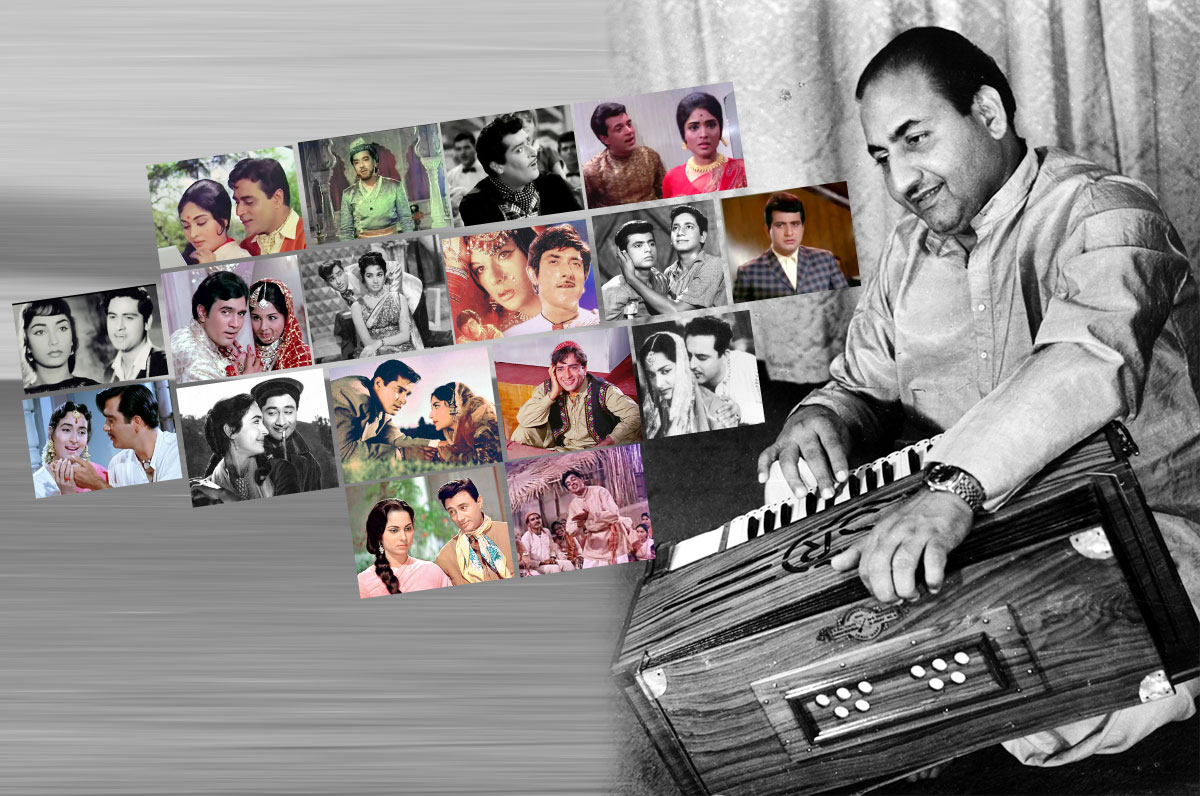Mohammad Rafi “Money isn’t the only Criterion for me to Accept a Film”
Little did I realize that this interview would be Rafisaab’s last ever interview to the press. One of the few filmland celebrities belonging to the old school of discipline, Rafi was waiting for me at the dot of the appointed time, after doing his riyaz in the morning.
Rafisaab has always felt that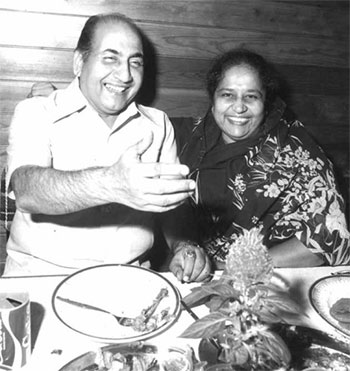 though singing is a God-given gift, “to maintain your voice is tough.“From 1942, I have had my ups and downs. Riyaz is a must if you want to preserve the quality of your voice. I do not smoke or touch liquor. I am pained to see some singers who after giving one hit song, start acting big only to fall down with a thud soon after.”
though singing is a God-given gift, “to maintain your voice is tough.“From 1942, I have had my ups and downs. Riyaz is a must if you want to preserve the quality of your voice. I do not smoke or touch liquor. I am pained to see some singers who after giving one hit song, start acting big only to fall down with a thud soon after.”
Incidentally, as a mark of tribute to Mohammad Rafi on his birth anniiversary which was held on December 24 this year, we are reproducing this rare gem of an interview which had appeared 37 years ago in the now defunct film fortnightly Star & Style Issue dated August 22, 1980.
Incidentally, I had landed at the door step of his bungalow in Bandra ten minutes late after the appointed time. Rafisaab hugged me and very politely told me that it was not possible for him to grant me an interview only because I did not reach his house on time and he had given a new music director time to record his song for a new film and I had to go the very next day at the dot of 9 am for the interview. A humble and publicity shy celebrity, Rafi’s formula for success is his innate humility. “It is a must for one to be successful in any field.” Resorting to chaste Urdu, he explains. “Kisika dil humne kabhi dukhaya nahin. Jo kisika dil ko dukhata hai, woh zindagi mein kabhi tarakki nahin karega.”
Rafi was born on December 24, 1924 in Punjab’s Amritsar district. At a very young age, he showed an aptitude for music and was trained under Ustad Abdul Waheed Khan of Kirana Gharana. How he became a playback singer is described by him as follows.
“Ab aapko main kya kya bataoon? I am a native of Lahore. I belong to a very orthodox and conservative Muslim family. I used to sing at friends’ places when I was only 15. During one such occasion, top actor-producer of that time Naser Khan spotted me, offered to take me to Bombay and groom me as a singer in films. Khansaab had asked my father for permission which was refused point blank because he frowned upon the very idea of my taking up singing in films as my career.”
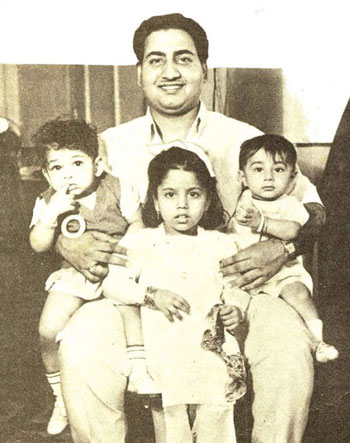 Rafisaab continues with childlike enthusiasm.“My elder brother however convinced my Abbajaan to let me go to Bombay. With great reluctance he agreed. I made my debut as a playback singer in 1942 with Laila Majnu, a Nazir-Swarnalata starrer. I sang a qawwali as part of the chorus for music director the late Pandit Govindram. I even did a bit role in the film. Later I acted in films like Samaj Ko Badal Dalo , Jugnu etc. In Gaon Ki Gori, I sang a duet with Noor Jehan under the baton of music director Shyam Sunder.”
Rafisaab continues with childlike enthusiasm.“My elder brother however convinced my Abbajaan to let me go to Bombay. With great reluctance he agreed. I made my debut as a playback singer in 1942 with Laila Majnu, a Nazir-Swarnalata starrer. I sang a qawwali as part of the chorus for music director the late Pandit Govindram. I even did a bit role in the film. Later I acted in films like Samaj Ko Badal Dalo , Jugnu etc. In Gaon Ki Gori, I sang a duet with Noor Jehan under the baton of music director Shyam Sunder.”
Rafi voices his disillusionment with the music directors today. He was visibly pained that music directors’ sign films by the dozens and hence quality of music in films has deteriorated “Very few music directors today work with dedication on their tunes and compose memorable music like Lakshmikant-Pyarelal did in Sargam. Most of the others are there in this field only to make a fast buck by copying foreign tunes and plagiarizing other composers’ tunes.”
“Film making wasn’t merely a business proposition during those days when Institutions reigned supreme and freelancing had not become popular. Believe it or not, I used to be paid a meagre amount of Rs 75 in those days for singing one song. When I entered there were popular singers like Saigal Saab, G.M. Durrani and Khan Mastan. Unki khoobi yeh tha janaab ki instead of considering me as yet another competitor, they encouraged me to give my best.”
Rafisaab pauses and remembers the first time that he had got an opportunity to met Saigalsaab when I was just 15 at Lahore where he had come to give a concert on the stage. The mike failed at the last minute and while it was being set right, I was asked to keep the audience engaged by singing a couple of songs He blessed me and predicted that a day would come when I’d be a sought after singer.
“Melody and classical training were primary when I set my foot in the field.Today, however music has degenerated into just shor .In those days, we singers used to help the interlude music, whereas today it’s the other way round. A situation has come today when the interludes help the playback singer.”
Mohammad Rafi, unlike Kishore Kumar who wouldn’t sing until his remuneration is paid in full before the recording has even sung for a token amount of just one rupee. “Though I insist on being paid my price by commercial film makers who can afford it, I sing for small budget films including regional films for a much lower price.
Rafisaab continues.“Money isn’t the only criterion for me to accept a film. Out of my earnings, I keep aside a sizeable amount for charitable purposes but I prefer not to tom-tom about it, because I do not want to seek publicity for these acts”
It is very interesting to note that In spite of several years of experience in the field, Rafi has never composed music for any film. “S Mukherjee had asked me to compose music for one of his films but I refused because it’s my firm belief that one should be perfect in only one field Look at Talat Mehmood”.
Rafi proceeds to explain. “Talat Mehmoodji took up acting and after that he could click neither as an actor nor as a singer. Late Mukeshbhai took up production and lost heavily when the films he made flopped. If I were to compose music today, the other music directors would start feeling that I may steal their tunes for my own songs and stop assigning me the job of singing for them”
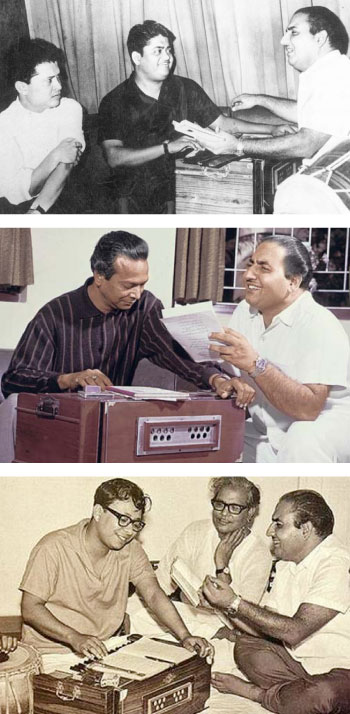
 Dastaan –E-Rafi is our labor of love”
Dastaan –E-Rafi is our labor of love”
– Rajni Acharya
The ace journalist cum PR person who has also directed several short films and documentaries for youtube tells JYOTHI VENKATESH that it was not an easy task to make a documentary on the late singer Mohammad Rafi, called Dastaan E Rafi, which has been showcased at Knowledge Gate Literary Festival in Hyderabad and also at Idywood Film Carnival at Ramoji Rao Film City, Hyderabad in 2016.
How did you embark on the journey of coming up with a documentary on Rafi?
In the first place, Sujata Deo, wife of my friend Amit Deo was planning to write a book on Rafi. We decided to join hands with one another without interfering with one another’s sphere creativity-wise. She wrote the book and I shot for my film titled Dastaan-E-Rafi.
Why did you choose to make a two hour documentary on the late Mohammad Rafi instead of K.L. Saigal, Kishore Kumar or say Mahendra Kapoor?
I chose Mohammad Rafi as my subject because he is one of the best not only in India but also Asia besides being a playback singer of exceptional quality. When I started making the documentary on Rafi, I realized that Rafisaab has also been a great silent donor and philanthropist and a great human being.
What is your background as a documentary filmmaker?
I have directed around 400 documentaries and short films for different NGOs, besides having been a journalist. I was also associated with a leading TV channel as its Vice President. My stint as a PR person helped me get singers and music directors for the interviews for the documentaries and my stint as a journalist helped me interview people who were close to Rafisaab like Khayyam, his brother etc. I was also associated in Jayantilal Gada’s projects like P Se P M Tak in production. I share a very unique relationship with him for a long time and I may handle a project of his very shortly.
Did you have the opportunity to meet Rafi in person?
I was very young when I met him at a recording of a song composed by Lakshmikant and Pyarelal as Pyarelal’s son Mahesh Sharma is a dear friend of mine.
Tell me about your documentary Daastan E Rafi!
My documentary Daastan E Rafi has duration of around two hours, though we shot for over 300 hours. It took me and my team around five years and 120 shooting days in Mumbai, Lahore, Karachi and Punjab to make this rare documentary, which was released by Shemaroo guys who are very good friends of mine for the last several years. I would be failing in my duty if I do not make a mention of Shemaroo because without songs, a documentary is like a body without soul
How much of the footage did you shoot and how much did you get from various sources?
But for 10% which my co-director Vinay Patel and I obtained from sources like Doordarshan and Films Division, we have shot most of the documentary on our own, with Prakash Karlekar as the cameraman. Nothing was downloaded from the youtube. Though we tried to approach various legends including Lata Mangeshkar, Asha Bhonsle and Dilip Kumar, unfortunately we did not get a positive response. We would have been happy if we had got their cooperation but now we have no regrets or complaints. May be they had their own reservations.
How tough or easy was it for you to select Rafi’s songs for your documentary?
It is 100% my team’s labor of love. We feel we have done nothing and it is just Rafisaab’s divine hands that goaded us to make the film. I did not have any hand at the selection of the songs for the documentary, though I like each and every song of Rafisaab as a Rafi lover. Only those songs were selected which were part of the requirement for the documentary as mentioned by Shammi Kapoor, Jeetendra etc.
What next, after Dastan E Rafi?
I am right now working on two different projects both of which are in the pipeline. One of them is a documentary on Avinash Vyas, who is a popular music composer of Gujarati films and another one is on the cancer specialist Dr Harikesh Booch.
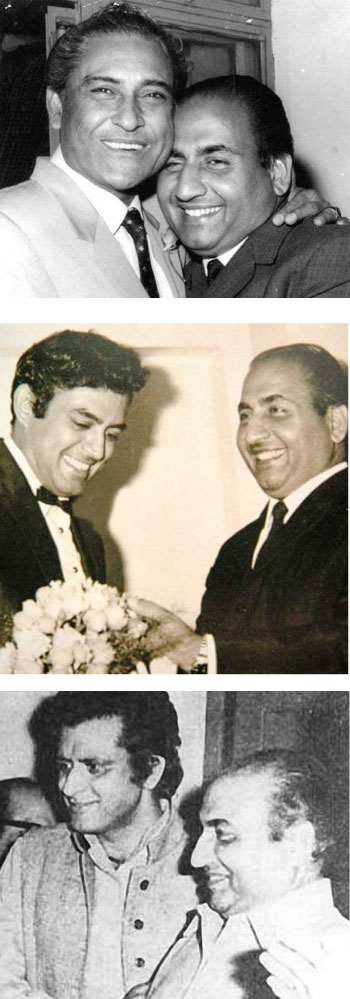
 ‘Rafi-saab stunned me with his humility’
‘Rafi-saab stunned me with his humility’
Chaitanya Padukone, senior entertainment journalist and author of memoirs book R D BurMania’
Way back in 1977, during the rainy season, as a young college student, studying at the Lala Lajpatrai College at Haji Ali in Mumbai and living at Tardeo very close to the Famous Recording Studios, where playback singers and music composers used to sing day in and day out, I had the privilege to attend the song recording of genius composer R D Burman’s ‘Hum Kisi Se Kum Nahin’ at Film Center Labs which was situated at Tardeo, Central Mumbai.
The iconic song was none other than the National and Filmfare award-winning ‘Kya Hua Tera Vaada’. At around 9.30 am, I guess, the team of cine-musicians were religiously rehearsing with ‘music conductor’ Bablu-Da supervising. Abruptly there was an eerie silence.
All the musicians stood up in reverence, like it happens in a school classroom when the Principal walks in. Even I stood up, not realizing the reason. Nine seconds later, I saw a short-statured simple stocky man modestly walking in and gesturing the musicians with both his hands to sit down and continue with their rehearsals.
That gentleman was the legendary Mohammed Rafi-saab. By sheer coincidence he came and sat on a chair just two feet away from where I was sitting, while the sound ‘balancing’ was being checked meticulously on the huge console, by the sound-recordists and none other than Pancham-da (RDB) himself.
When he smiled at me and asked ‘Beta recording dekhne aaye ho’, I felt goose-bumps all over my body. After fumbling a bit, I responded and said ‘Jee Rafi-saab’. Realising my discomfort in his awe-inspiring presence, he gently asked me ‘Kuchh khaaoge beta’ and then requested his assistant to instruct the cafeteria-boy to get me a soft-drink and snacks.
As far as possible, the benevolent playback singer Mohammed Rafi avoided taking any risks to his versatile, vibrant soothing voice.
Simply because he did not wish to cause any inconvenience to producers, directors or music directors in case his vocal chords were affected.
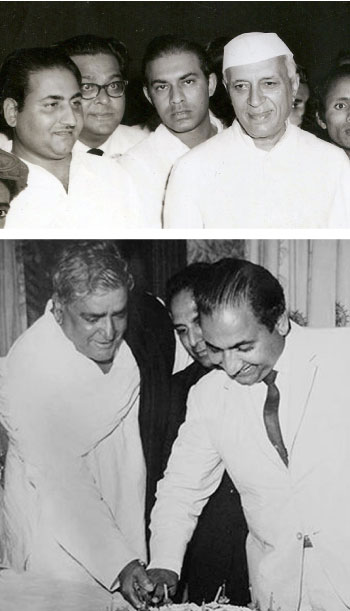
 The ‘raaz’ revealed behind the iconic scream ‘Yaaahooo’
The ‘raaz’ revealed behind the iconic scream ‘Yaaahooo’
Not many are aware, that in the movie ‘Junglee’ known for its iconic scream-yell ‘Yaaahooo’ in the title-song, it was not Mohammed Rafi who screamed, but writer-director and lead chorus-singer Prayaag Raj who was asked to do it.
Reveals Prayaag, “Although Rafi-saab was the actual playback singer of Chaahe Koi Mujhe Junglee Kahe, composers Shankar-Jaikishan roped me in for this additional startling voice track”.
Prayaag continued. “They felt that the wild screams of Yaaahoo for multiple takes would be a professional vocal hazard for Rafi Saab. They ( including Rafi Saab) felt I had the perfect potential. Acoustics expert Minoo Katrak recorded ten re-takes of just the ‘Yaaahoo’ yell in my voice out of which only two ‘takes’ were finally okayed,” recalled Prayaag.
But wasn’t his voice badly affected after the recording? Reacts Raj, “Of course baar-baar zor sey chillaana hurt my throat. Apart from Rafi-saab and hero Shammi Kapoor-saab profusely complimenting me, I was also paid a generous amount for my wild scream, which lasted me for a month in those days.
“Later on, I came to know that Rafi-saab had also discreetly recommended that I should be rewarded for my vocal gimmick. Not only that, Rafi-saab was among those who suggested my name for his chartbuster songs in ‘Jab Jab Phool Khile’ and ‘Farz’, which required loud screams,”discloses Raj.
“What are your hobbies,’ he asked me and I mentioned kite-flying and badminton. “ Kya baat hai, these are my favorites too, I love kite-flying, but when I see the kati patangs, thoda dukh bhi hota hai” the legendary singer Rafi-saab smiled, as he patted me and headed towards the singer’s cabin. That’s when I realized that real star-quality lies in sheer humility.
All I can say now about iconic Rafi-saab is ‘woh jab yaad aaye, bahut yaad aaye’!

 “Out of the footage of 200 hours, I have edited it to two hours”
“Out of the footage of 200 hours, I have edited it to two hours”
– VINAY PATEL
To what extent is your documentary Dastan E Rafi based on the book written on RafI by Sujata?
When Sujata Dev was taking her interviews for her book, we were shooting simultaneously for our documentary. The content is the same but in the book; the sequence is according to the interviews whereas in the documentary, it is edited, according to the sequences of his life.
How many songs of Rafi have been included in your documentary?
In all, we have included 60 songs in it. The bytes used in the documentary are according to the need of the script and not according to the star value of the celebrity.
How would you describe the late Mohammad Rafi?
Mohammad Rafisaab was a genius, in every sense of the term. I consider myself to be too small in experience as well as age to even talk of him. After editing and co-directing the documentary in tandem with Rajni Acharya, all that I can say is that we may get yet another singer like him but it’s just not possible to get yet another human being like Rafi in today’s world.
Which aspect of Rafisaab, do you like the most?
At the height of success, to remain down to earth is just not possible for an average human being. As one of the fans of Rafisaab told me during the screening of the show, that there are very few saabs in the film industry like Rajsaab, Dilipsaab, Devsaab etc but in the music industry there was only one Saab Rafisaab.
The rights for Dastan E Rafi have been sold to Shemaroo and the telecast rights to Zee rights to Shemaroo. Do you and Rajni still have the rights over your film?
While for Shemaroo, it’s a product, for us it’s a passion, love and respect for Rafisaab. That’s why Rajnibhai and I are doing a lot of screenings of the documentary in India, to create awareness of the documentary among people,
How do you think the film can reach maximum number of people who are Rafi lovers all over the globe?
There is actually no need for promotion because it is about Rafisaab and people are definitely liking it. By way of mouth publicity it will be more popular. I don’t think anybody has put in so much effort to make a documentary on any other artist in India.
How tough was it for you to edit the footage that you and Rajni Acharya had shot on late Rafi?
As an editor of the films, it was very tough for me to edit because we had at our disposal too much of footage. Believe it or not, out of the footage which consisted of almost 200 hours, I have edited it to have duration of just around two hours. And it was not possible without the blessings of the late Rafisaab.
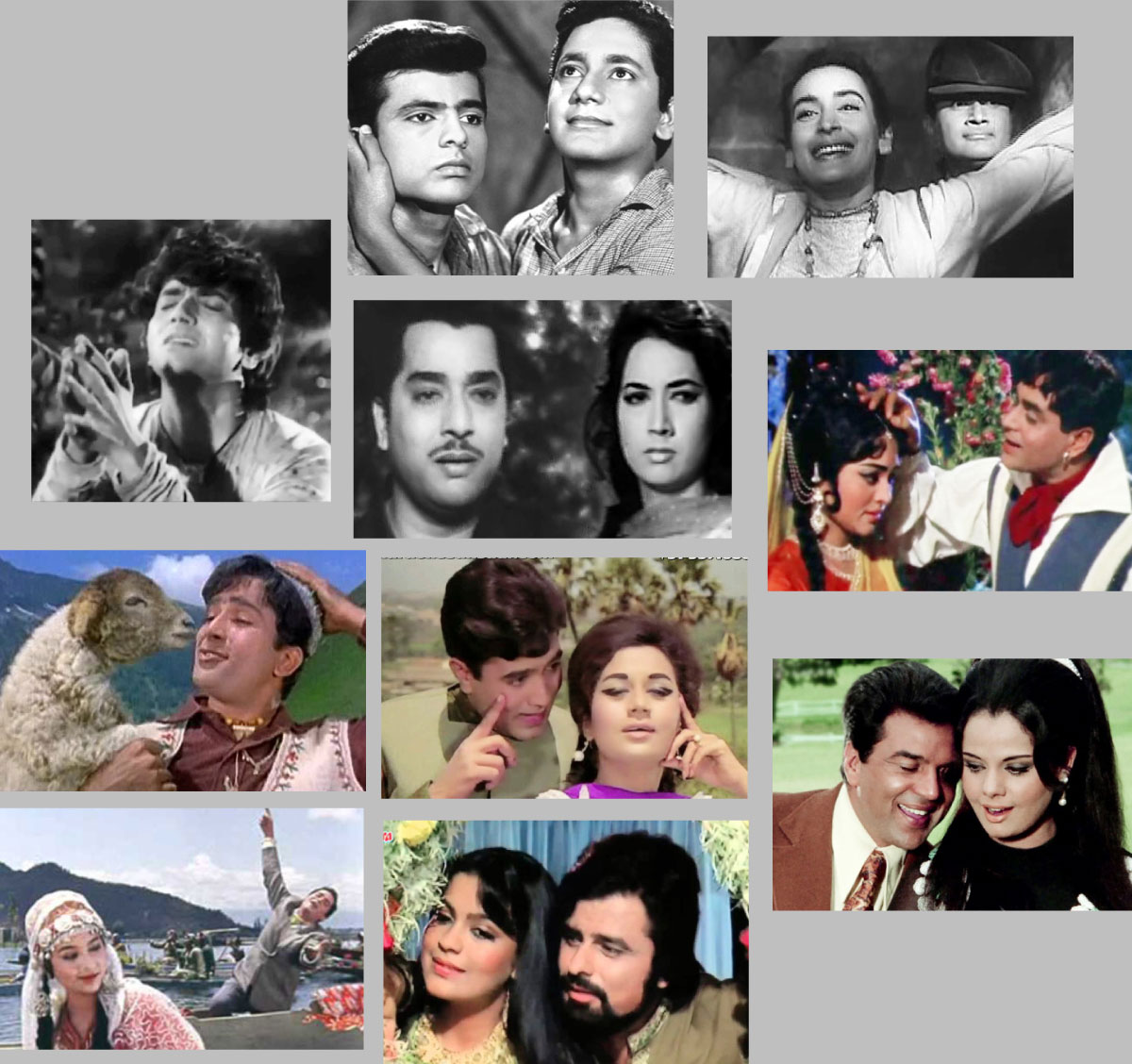 Top Songs of Mohammed Rafi
Top Songs of Mohammed Rafi
•O duniya ke Rakhwale
Film- Baiju Bawra
•Zindagi Bhar Nahin Bhoolegi
Film – Barsaat Ki Raat
•Yeh Duniya Agar Mil Bhi Jaaye To Kya Hai
Film – Pyaasa
•Chahoonga Main Tujhe Saanj Savere
Film – Dosti
•Khoya Khoya Chaand
Film – Kala Bazaar
•Kar Chale Hum Fida
Film – Haqeekat
•Sau Baar Janam Lenge
Film – Ustadon Ke Ustad
•Dil Ka Bhanwar Kare Pukar
Film – Tere Ghar Ke Samne
•Chhoo Lene Do Nazuk Hothon Ko
Film – Kaajal
•Pardesiyon Se Na Akhiyan Milana
Film – Jab Jab Phool Khile
•Kya Se Kya Ho Gaya Bewafa
Film – Guide
•Puakrta Chala Hoo Main
Film – Mere Sanam
•Baharon Phool Barsao Mera Mehboob
Film – Suraj
•Tarif Karu Kya Uski Jisne Tumhe Banaya
Film – Kashmir Ki Kali
•Likhe Jo Khat Tujhe
Film – Kanyadan
•Badan Pe Sitare Lapete Hue
Film – Prince
•Tum Jo Mil Gaye Ho To Yeh Lagta Hai
Film – Hanste Zakham
•Gulabi Aankhen Jo Teri Dekhi
Film – The Train
•Yeh Reshmi Zulfein
Film – Do Raste
•Yeh Duniya Yeh Mehfil
Film – Heer Raanjha
•Maine Poocha Chaand Se
Film – Abdullah
•Aaj mousam bada beimann hai
Film – Lofer
•Humko Tumse Ho Gaya Hai Pyaar
Film – Amar Akbar anthony
•Teri Galiyon Mein Na
Film – Hawas
•Chand Mera Dil Chandni Ho tum
Film – Hum Kisise Kam Nahin


